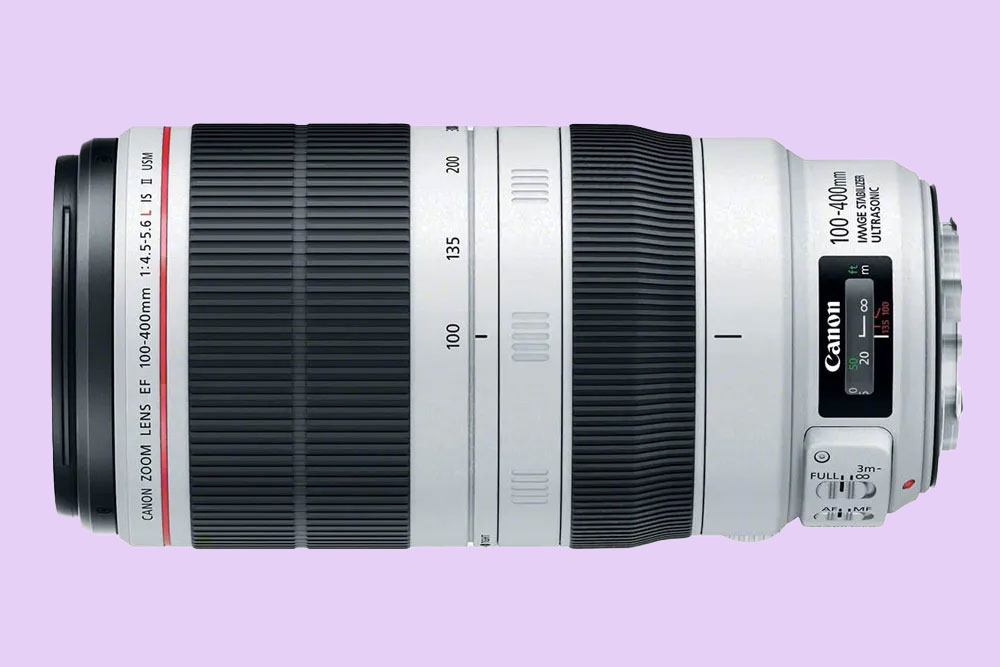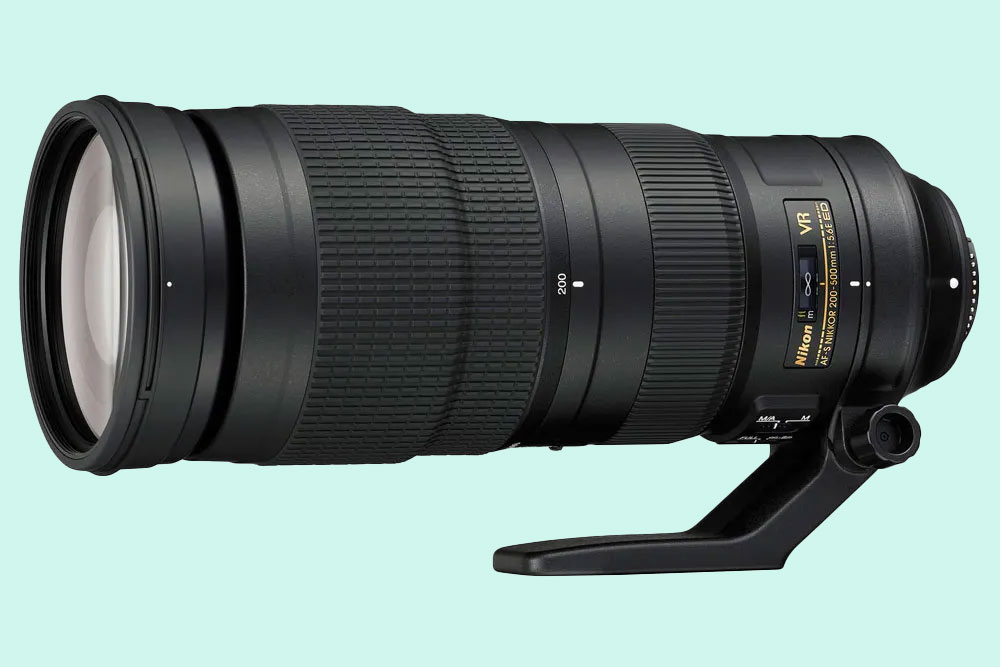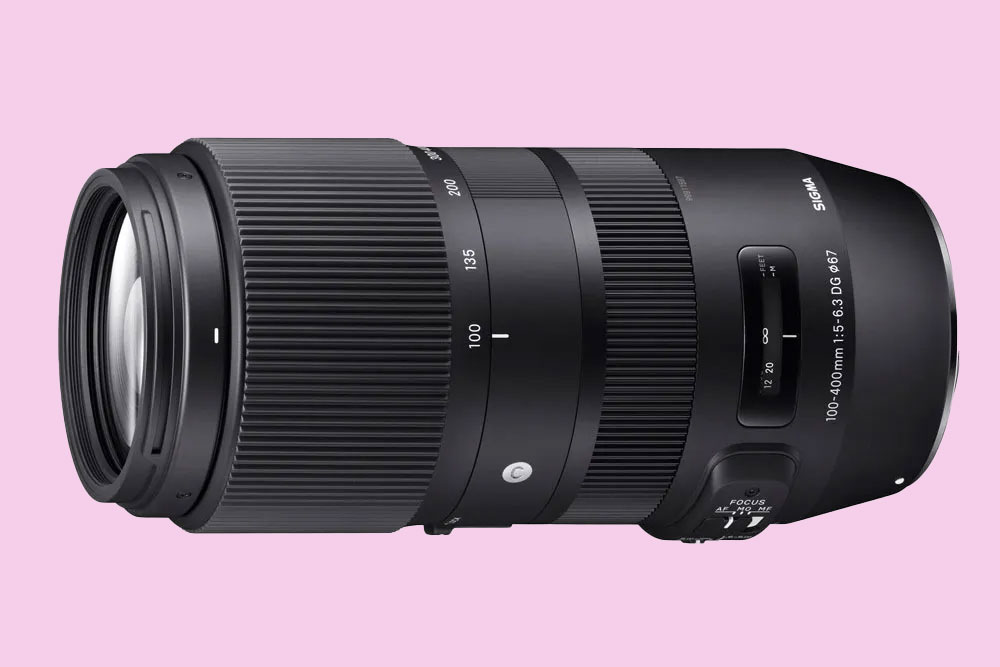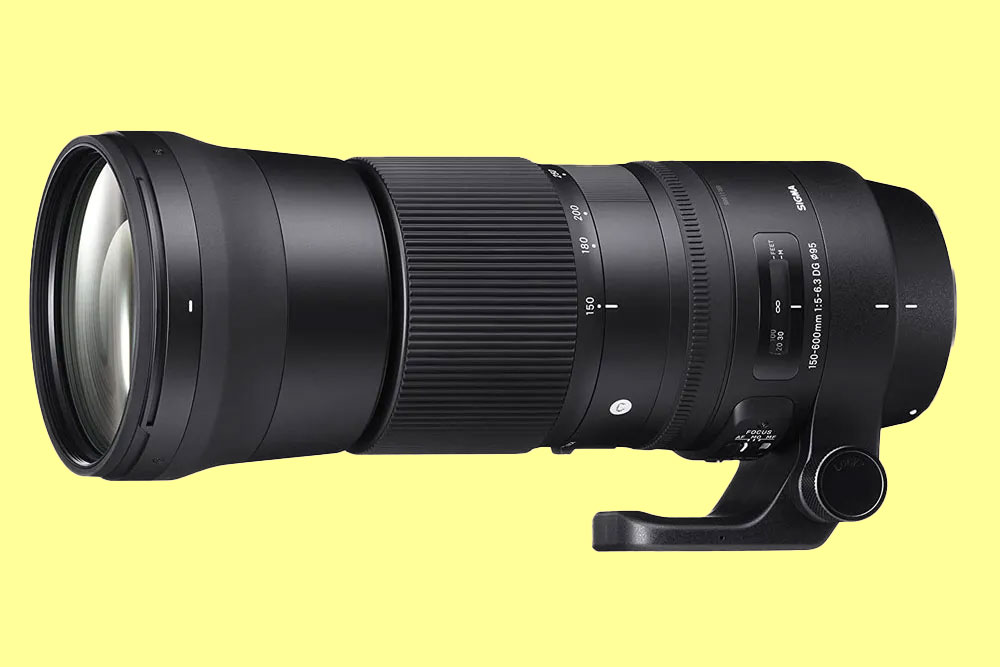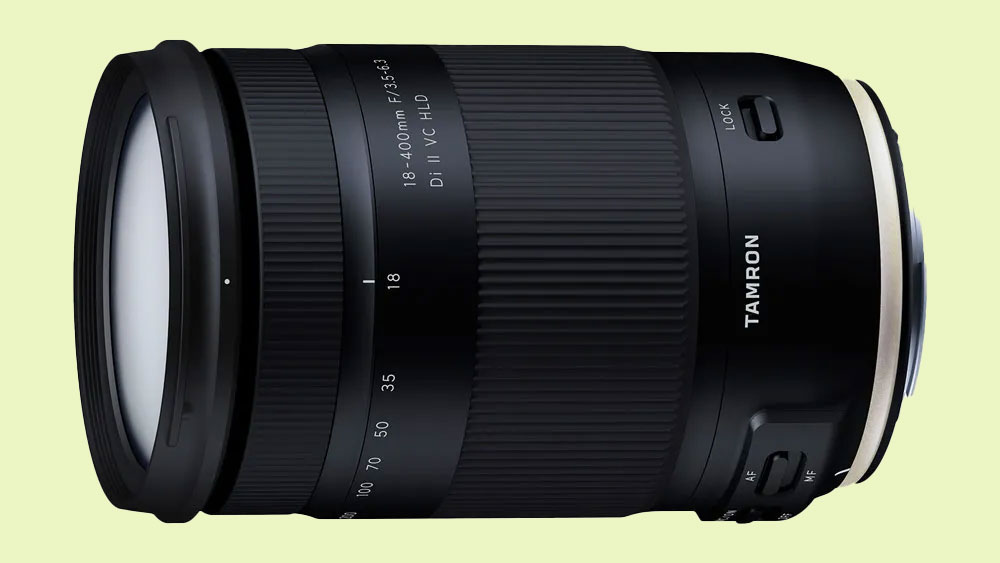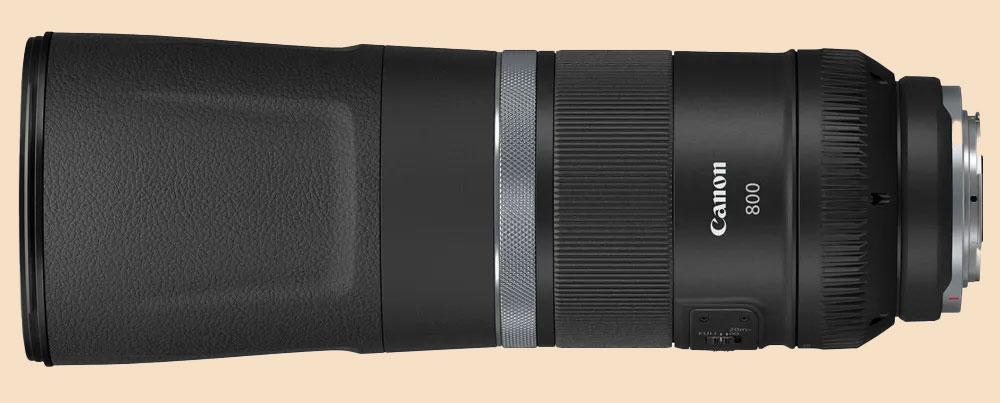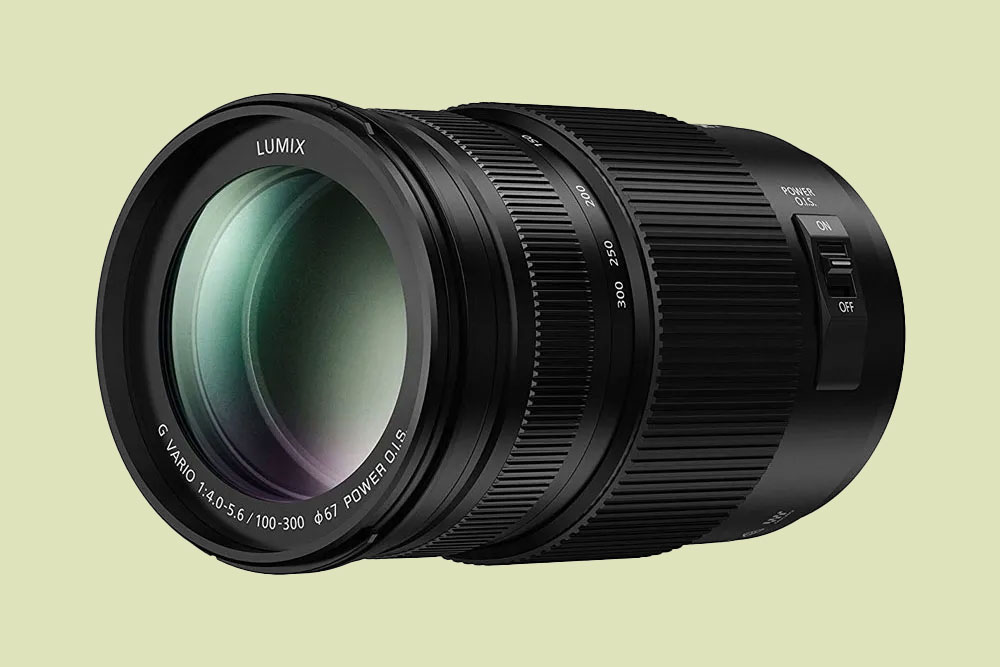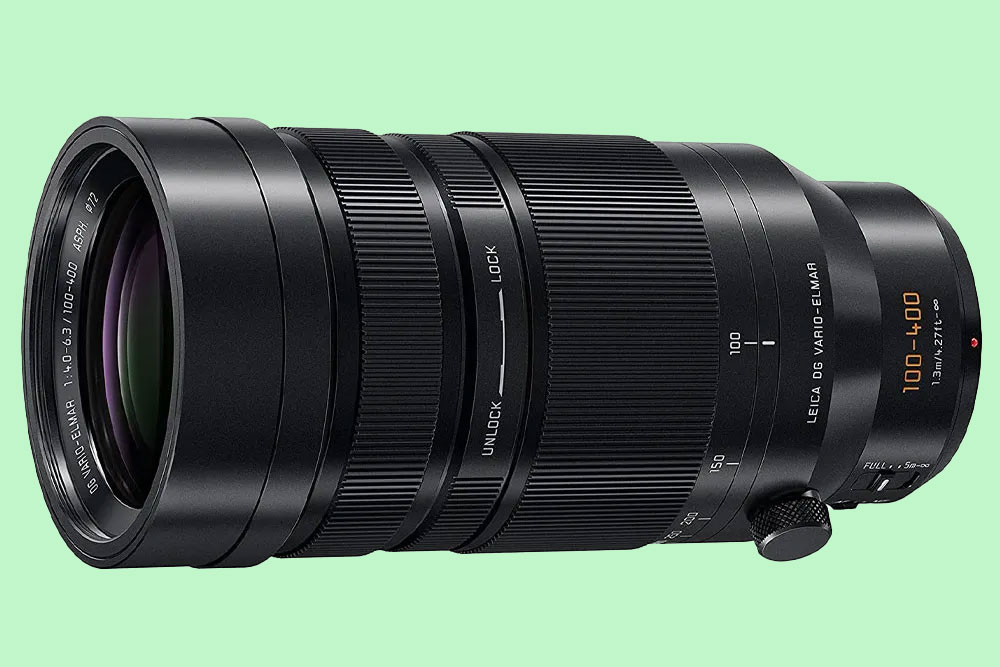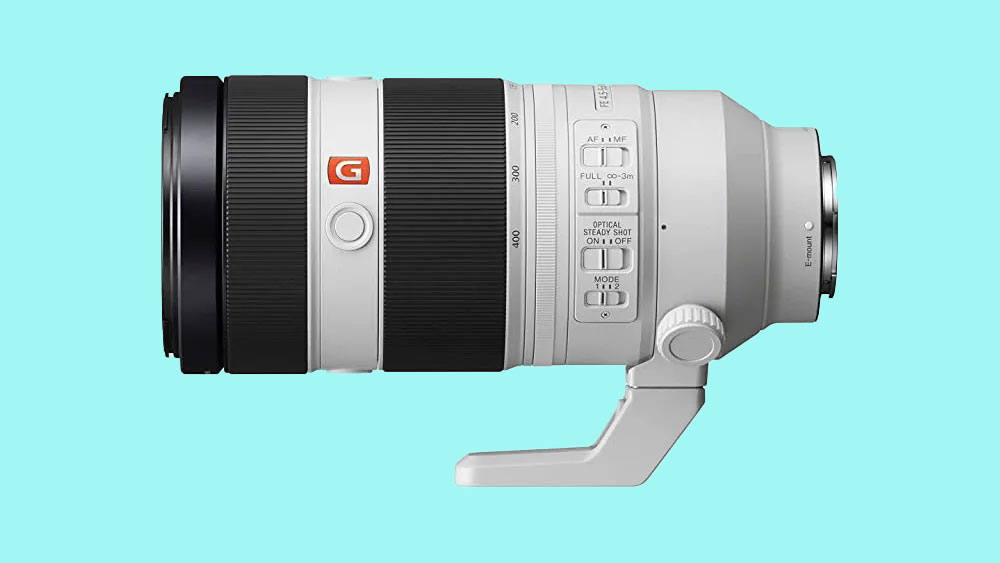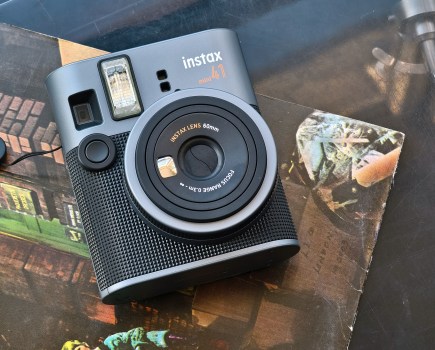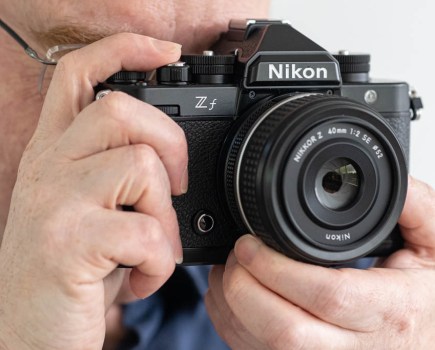In our guide to the best lenses for wildlife photography, Claire Gillo and the AP team pick the best of all DSLR and mirrorless lenses.
To capture pin-sharp wildlife images, it’s essential to have lenses suited to wildlife photography. Arguably, it’s a more important consideration than the camera itself, as there are so many factors to think about. As such, we’ve ensured our guide includes options for all the major camera systems, including DSLRs and mirrorless. Whether you shoot with Canon, Nikon, Sony, Fujifilm, Pentax, Panasonic or Olympus/OM System, we’ve picked out the absolute best wildlife lenses on the market, for a range of budgets.
The lenses we recommend here for wildlife are equally relevant to sports and action photographers.
Many of the lenses on this list have been tested and reviewed by our technical team on wildlife and action shoots. We’ve put in a mix of zoom and prime lenses, as both have their pros and cons in wildlife photography. Also, many manufacturers offer high-quality premium wildlife and sports lenses that run up five-figure price tags. As these are not a viable for most people, we’ve excluded many of these. If your budget is very tight, check out our guide to the best affordable telephoto lenses for wildlife photography.
Let’s take a quick look at the key attributes of a good wildlife lens.
How to choose the best lenses for wildlife photography
For wildlife shoots, we need long focal lengths, as wild animals generally won’t let you get close. At least 300mm is ideal, and you will often want more than that.
It’s a question of choice between zoom lenses or primes. Having a zoom provides more shooting flexibility, while prime lenses bind you to a specific focal length, with the trade-off of better optical quality. Zooms also tend to be cheaper, and are generally the best choice for amateurs.
Lenses have plenty more features to take into account. Size and weight are factors when carrying to the shooting location. Dust and weather sealing is also a consideration, given that wildlife photography is a decidedly outdoor pursuit. The minimum focus distance may also matter to those who want to get close-ups of smaller or tamer animals.
Wildlife photography often involves tripod use, so check if the lens comes with a tripod mount (or if one is available as an optional extra). The manufacturer may also offer compatible teleconverters – devices that provide greater reach, usually with a compromise to aperture width. They are more practical on mirrorless cameras than DSLRs, as autofocus tends to work better.
Look also at the maximum aperture. While you may not shoot wide-open very often for wildlife, an aperture larger than f/5.6 may come in handy; be it for creating shallow depth of field, or getting more light when the sun dips. Of course, lenses with larger apertures tend to be both larger and more expensive.
Whatever your needs and budgets, there are some great long telephoto lenses on the market that won’t break the bank (or your back). Here’s our pick of the best ones for wildlife photography – and for some good camera options to go with them, refer to our guide to the best cameras for bird photography.
Why you can trust Amateur Photographer
We spend many hours testing every product we recommend, in detail, in a variety of situations and shooting scenarios, and only use experts for our reviews, so you can be sure that you’re getting the best products. Find out more about our expert writers.
Looking for the best deal on camera lenses for wildlife photography? Not only will you find the best wildlife photography lenses, you’ll also find some of the best deals, as our ‘Buy now’ buttons are set up to automatically take you to the best prices from trusted retailers, You’ll also find a list of other retailers below each camera, so you can find the right deal for you.
What are the best lenses for wildlife photography? – DSLR users
Canon EF 100-400mm f/4.5-5.6L IS II USM
Amateur Photographer verdict
The rapid autofocus and superb image stabiliser is where this lens really excels. For those photographing fast and erratic subjects, such as birds or action sports, it doesn’t disappoint.- Impressive sharpness throughout zoom
- Rapid autofocus
- Effective stabiliser
- Focus distance window too close to mount
- Expensive
At a glance:
- 77mm filter thread
- 98cm minimum focus
- 193mm length x 94mm diameter
- Weighs 1640g
- Canon EF mount
- Price: $2,399 / £2,599
All the camera makers produce high-end 400mm zooms. Typically, they offer a decent range in a relatively portable package with fast, quiet autofocus and optical image stabilisation. For many photographers, these are the logical next step beyond 70-300mm type lenses for shooting wildlife.
Canon’s current EF-mount optic is a particularly fine example. It’s a significant improvement on the firm’s original version, being impressively sharp at all focal lengths. While designed for full-frame DSLRs, it also offers a very useful 160-640mm equivalent range on APS-C models. It’s pricey, though, so photographers on a budget may wish to look at alternatives from Tamron and Sigma.
Read our Canon EF 100-400mm f/4.5-5.6L IS II USM field test review.
Nikon AF-S Nikkor 200-500mm f/5.6E ED VR
Amateur Photographer verdict
An excellent telephoto zoom at a reasonable price, without sacrificing performance. If you want to shoot frame-filling wildlife or action, this lens should be one of your top choices for your Nikon- Can be used hand-held
- Longer range
- Reliable autofocus
- Not fully weather sealed
- Won’t work on all Nikon DSLRs
At a glance:
- 95mm filter thread
- 2.2m minimum focus
- 268mm length x 108mm diameter
- Weighs 2300g
- Nikon F mount
- Price: $1,400 / £1,250
For Nikon DSLR shooters, the 200-500mm f/5.6 is a unique option; a relatively affordable telephoto lens that provides a usefully longer range than conventional 100-400mm design. Use it on a DX-format camera such as the Nikon D500, and this extends to fully 750mm equivalent. Its f/5.6 maximum aperture makes it quite portable considering its range, and light enough to shoot with handheld.
Focusing is snappy and accurate, thanks to the AF-S motor. However, it’s not claimed to be weather-sealed, and being an E-type lens with an electromagnetic diaphragm, won’t work on older Nikon DSLR bodies. So do check compatibility with your camera before buying.
We gave this lens a thorough test in a challenging wildlife shoot, photographing little owls in Wiltshire. The result? Once the owls eventually showed up, we were able to capture a sequence of gorgeous wildlife images, with whip-fast focus (we used the lens on a D500 DSLR) and excellent sharpness. While the lens performs best when stopped down a little, results wide open at f/5.6 are more than acceptable. Plus, the long focal length means you still get great subject/background separation, even with a relatively modest aperture like this. We came away greatly impressed.
Read our Nikkor AF-S 200-500mm f/5.6E ED VR review.
Pentax D FA 150-450mm F4.5-5.6 ED DC AW
Amateur Photographer verdict
Full frame and APS-C Pentax users will find this unconventional focal length very useful, however without IBIS and weighing 2kgs you will need added support to reduce shake.- Quick-shift manual focus options
- Hardy and weather resistant
- 450mm max zoom
- Weighs 2kg
- No built-in optical stabilisation
At a glance:
- 86mm filter thread
- 2m minimum focus
- 242mm length x 95mm diameter
- 2000g weight
- Pentax KAF3 mount
- Price: $1,797 / £1,759
Rather than slavishly matching its rivals with a 100-400mm telezoom, Ricoh Imaging came up with something a little different. Designed for use on the full-frame K-1 and K-1 Mark II, this longer 150-450mm design is also entirely at home on the firm’s APS-C models, on which it provides an impressive 225-675mm equivalent range. The lens employs a built-in autofocus motor, backed up by Quick Shift Manual focus, and boasts weather-resistant construction. With Pentax SLRs including in-body image stabilisation, this is the only lens on our list that doesn’t include built-in optical stabilisation. Combined with its hefty size and 2kg weight, this means that users may well find a monopod helpful to minimise shake, and aid composition.
Sigma 100-400mm f/5-6.3 DG OS HSM | C
Amateur Photographer verdict
A smaller, lightweight affordable alternative to high end telephoto zooms. It has a slower variable aperture then most, but still offers a solid optical performance- Affordable for a lens of its type
- Lightweight
- Solid optical performance
- Not weather sealed
- No tripod mount
At a glance:
- 67mm filter thread
- 1.6m minimum focus
- 182mm length x 86mm diameter
- Weighs 1160g
- Canon EF, Nikon F and Sigma SA mount
- Price: $800 – $1,100 / £749
Many users can’t justify the cost of long zooms, and don’t want to cart around the weight, either. But this Sigma telezoom addresses these issues: it’s very affordable for a long-telephoto zoom, and noticeably smaller and lighter than most other 100-400mm optics, too. This comes at the cost of maximum aperture, but with the high ISO performance of modern cameras, that’s of lesser concern than it might once have been.
While it’s designed for full-frame DSLRs, this is also a great choice for APS-C cameras, giving a 150-600mm equivalent range. However, users should be aware that it’s not weather sealed. Being designed for hand-held shooting, it doesn’t come with a tripod mount ring either.
Sigma 150-600mm f/5-6.3 DG OS HSM | S
Amateur Photographer verdict
Autofocus is swift and reacts sharply to focusing on moving subjects. Build quality is sturdy and exemplary, while sharpness won’t disappoint either- Hardy outdoor construction
- Excellent image quality
- Lightning-fast autofocus
- Too big for prolonged handheld use
- Expensive
At a glance:
- 105mm filter thread
- 2.6m minimum focus
- 290mm length x 121mm diameter
- Weighs 2860g
- Canon EF, Nikon F and Sigma SA mounts
- Price: $930 – $1,250 / £899
Sigma offers two 150-600mm zooms designed for use on full-frame DSLRs, with the same base specifications. We especially like the Sports version – it’s huge and expensive, but seriously sharp, with impressively fast autofocus. It’s not so big that you can’t shoot it handheld at a pinch, although for extended sessions you’ll probably want a sturdy monopod.
It boasts dust and splash resistant construction for outdoor use, while for those who need even longer reach, it can be bought with a 1.4x teleconverter for a £100 premium. The firm also makes a ‘Contemporary’ version that’s smaller, lighter, and much more affordable, at £849, but doesn’t give quite the same image quality.
We put the Sports version of the lens through its paces at a car rally in North Wales. It’s quite a lens to use, with real effort required to turn the zoom mechanism – a by-product of a construction of 24 elements in 16 groups. Still, the focusing is fast and reliable, and when you fire a burst of shots at a fast-moving subject you can be pretty confident that a good handful of them will be nice and sharp.
There is pretty severe vignetting at the 600mm end that’s worth being aware of; otherwise, optical performance is very good. For rough-and-tumble adventures, this hardy lens will do an exemplary job and that makes it one of the best lenses for wildlife photography.
Read our Sigma 150-600mm f/5-6.3 DG OS HSM | S field test.
Tamron 100-400mm F/4.5-6.3 Di VC USD
Amateur Photographer verdict
The lightest 100-400mm lens on the market, with 4 stop optical stabilisation, and moisture resistant construction. The otherwise fast autofocus becomes unreliable when paired with a teleconverter- Incredibly light
- Optional tripod foot
- Rapid, silent focusing
- DSLRs only
- Teleconverters interfere with viewfinder
At a glance:
- 67mm filter thread
- 1.5m minimum focus
- 199mm length x 86mm diameter
- Weighs 1135g
- Canon EF and Nikon F mounts
- Price: used around $800 / £650
This Tamron optic has the distinction of being the lightest 100-400mm lens for DSLRs on the market. It also stands out from its most direct rival from Sigma in offering a tripod mount foot as an optional accessory. Key features include an ultrasonic-type autofocus motor for fast, silent focusing and 4-stop optical stabilisation. The design also boasts moisture resistant construction and fluorine coating aimed to give you peace of mind in bad weather. Last but not least, this lens is compatible with Tamron’s 1.4x and 2x teleconverters, for even greater reach. Just be aware that the viewfinder will get dark and autofocus is unlikely to be reliable, if it works at all.
Tamron 18-400mm F/3.5-6.3 Di II VC HLD
Amateur Photographer verdict
A versatile super zoom with an effective vibration compensation system and weather-resistant seals, it allows users to shoot sharp handheld images with slow shutter in low-light, or adverse weather co- Resistant to dust and splashes
- Very broad zoom range
- Built-in stabilisation
- Not as sharp as others
- Distortion and vignetting make RAW shooting necessary
At a glance:
- 72mm filter thread
- 45cm minimum focus
- 124mm length x 79mm diameter
- Weighs 710g
- Canon EF and Nikon F mounts
- Price: around $820 / £430 – £575
All-in-one superzooms aren’t the natural first choice for wildlife, but can be handy in situations where you need to travel light or don’t have time to change lenses. Tamron’s ground-breaking 18-400mm for APS-C DSLRs is the longest lens of its type, with its 22.2x zoom providing an impressive 27-600mm equivalent range.
It’s also dust- and splash-resistant for outdoor shooting, while optical stabilisation is on board to combat camera shake, which is essential with such a long lens. You won’t get as sharp pictures as you would with a premium telephoto lens, but it’ll certainly be better than not getting the shot at all.
As we said in our review, this is a lens that excels when you’re realistic about what it can and can’t achieve. We found the lens does create visible distortion and aberration, so it’s worth shooting in RAW to make these flaws easier to correct. If you’re okay with this, then the sheer versatility you’ll get from the lens simply makes it downright enjoyable to use, and a fun choice for all kinds of different wildlife shoots. Plus, the price makes it a relatively inexpensive addition to your kit bag.
Read our review of the Tamron 18-400mm F/3.5-6.3 Di II VC HLD.
What’s the best lens for wildlife photography – mirrorless systems
If you’re a mirrorless camera shooter, these are some of the best lenses for wildlife photography available now:
Canon RF 100-400mm F5.6-8 IS USM
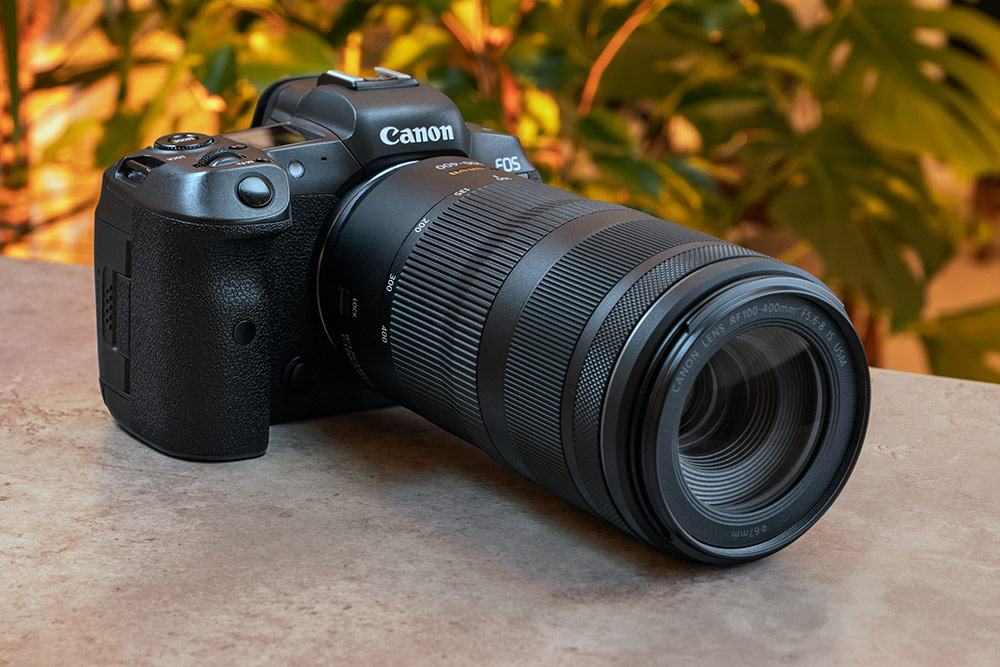
Amateur Photographer verdict
If you are a Canon EOS R system user and don’t want to spend the thousands required for the L series and prepared to accept a bit of give and take, this RF 100-400mm f/5.6 will make you very happy- Highly affordable
- Very portable
- Impressive sharpness for the price
- f/5.6 may be too limiting
At a glance:
- 67mm filter thread
- 0.88m minimum focus
- 165mm length x 80mm diameter
- Weighs 635g
- Canon RF mount
- Price: $649 / £640
This unusual optic for Canon’s EOS R-series full-frame mirrorless cameras has the distinction of being the smallest, lightest, and most affordable 100-400mm lens on the market by quite some margin. It achieves this by using a modest maximum aperture that’s a stop smaller than usual for this type of lens.
As a result, you’ll often need to increase the ISO setting by a stop to keep shutter speeds up and avoid subject motion blur. You also won’t get quite so much blur when shooting a subject against an out-of-focus background. But this could prove a small price to pay for a lens that’s highly portable and easy to shoot hand-held.
In our review, we found ourselves highly impressed by how intelligently Canon has gone about making a lens of this type so affordable. The compromises all make sense, and add up to the Canon RF 100-400mm F5.6-8 IS USM being a very tempting proposition indeed for wildlife photographers.
Read our review of the Canon RF 100-400mm F5.6-8 IS USM.
Canon RF 100-500mm F4.5-7.1L IS USM
Amateur Photographer verdict
Boasts highly effective in-body image stabilisation (IBIS) and excellent ISO response on Canon’s latest EOS R cameras- Extra bit of zoom range
- Weather sealed
- Fast, silent autofocus
- Very expensive
- On the heavy side
At a glance:
- 77 mm filter thread
- 0.9m minimum focus
- 208mm length x 94mm diameter
- Weighs 1530g
- Canon RF mount
- Price: $2,600 / £2,500
Rather than simply recreate its DSLR lenses for mirrorless, Canon has routinely come up with something a little different for its RF-mount range. This lens is a case in point: it achieves a usefully extended focal length range while being lighter and only slightly longer than its EF 100-400mm f/4.5-5.6 counterpart.
In other respects, it retains all the features you’d expect from Canon’s pro ‘L’ series, including weather-sealed construction, fast, silent autofocus and effective optical image stabilisation. It’s also compatible with Canon’s RF 1.4x and 2x teleconverters without any significant loss of functionality. It doesn’t come cheap, but it has a lot to offer for demanding wildlife shooters.
We put the Canon RF 100-500mm lens through a thorough testing procedure for a full review, examining how it handled itself in a range of difference shooting situations, including fast action. It’s a superb lens all-around, with impressive sharpness throughout its zoom range. We used it with the EOS R5, a high-resolution camera that demands the best from its lenses, and the RF 100-500mm acquitted itself well. Once you get used to a few of its foibles, like that sheer aperture drop-off at the tele end, it’s a tremendous wildlife lens.
Read our Canon RF 100-500mm F4.5-7.1 L IS USM review.
Canon RF 800mm F11 IS STM
Amateur Photographer verdict
A fixed aperture of f/11 can be restrictive and will require you to crank up the ISO, but if you are willing to compromise you get a lightweight sharp optic with quick autofocus- Can be used hand-held
- Effective stabilisation
- Excellent sharpness
- Fixed f/11 aperture might be restricting
- 6m minimum focus distance
At a glance:
- 95mm filter thread
- 6m minimum focus
- 282mm length x 102mm diameter
- Weighs 1260g
- Canon RF mount
- Price: $999 / £949
This unusual lens is another striking example of Canon’s imaginative optical innovation, being the most portable and affordable 800mm autofocus lens on the market by a huge margin. In fact, it’s light enough to be entirely usable hand-held, which is unprecedented for such a long lens, especially on full-frame. Thanks to its quick autofocus, effective optical stabilisation and sharp optics, it’s also capable of delivering fine results. It’s still rather bulky, though, and the fixed f/11 aperture can be restrictive at times, requiring the use of high ISO settings even in good light. Another drawback is the long 6m minimum focus distance. Canon also makes a similar 600mm f/11 model that’s smaller and lighter, and costs £860.
What’s the best Nikon lens for wildlife photography?
Nikon Nikkor Z 100-400mm f/4.5-5.6 VR S

Amateur Photographer verdict
Offers a good compromise between performance and affordability for wildlife for Nikon Z-mount users- Super-speedy
- Reliably sharp
- Weather-sealed
- Expensive
At a glance:
- 77mm filter thread
- 75cm minimum focus
- 222mm length x 98mm diameter
- Weighs 1355g
- Nikon Z mount
- Price: $2,697 / £1,690
Judging from the specs alone, nothing looks particularly outstanding about Nikon’s Z-mount 100-400mm telezoom. The firm boasts that it’s the lightest in its class, but not by very much. In other respects, it ticks all the boxes we’d expect. It boasts pro-spec weather-sealed construction, employs dual stepper motors for fast, silent focusing, and includes optical image stabilisation rated for an impressive 5.5 stops of shake reduction.
In practical use, it turns out to be an excellent lens that’s a fine match for the firm’s high-speed, high-resolution flagship Nikon Z9. Our testing proved the Nikkor Z 100-400mm f/4.5-5.6 VR S to be capable of delivering sharp images, time after time. It’s the kind of lens you can rely upon to deliver, no matter how difficult the conditions.
See why we gave the Nikon Nikkor Z 100-400mm f/4.5-5.6 VR S five stars
Olympus M.Zuiko Digital ED 150-400mm F4.5 TC 1.25x IS Pro
Amateur Photographer verdict
An amazing wildlife lens that takes the 1.4x and 2x teleconverters, and is both compact and lightweight. It’s surprisingly sharp at both ends and can produce some fantastic images- Incredible equivalent zoom range
- Good up close, too
- Impressive stabilisation
- Massively pricey
At a glance:
- 95mm filter thread
- 1.3m minimum focus
- 314mm length x 116mm diameter
- Weighs 1875g
- Micro Four Thirds mount
- Price: $7,500 / £6,700
Sizeable and seriously expensive, this beast of a lens demands inclusion in our list by virtue of its extraordinary telephoto reach. Built for use on Micro Four Thirds cameras such as the OM System OM-1, it offers a 300-800mm equivalent range; engage the built-in switchable teleconverter, and this extends to 375-1000mm equivalent at an aperture of f/5.6. In the unlikely event this isn’t long enough, it’s also compatible with 1.4x and 2x Olympus teleconverters, giving 1400mm and 2000mm respectively.
The lens isn’t just good for distant subjects, either; its 1.3m minimum focus distance enables super-telephoto macro shooting, with 1.0x equivalent magnification. Other key features include optical stabilisation with Sync IS, and full weather-sealing.
Read Andrew Fusek Peters’ review of the Olympus M.Zuiko Digital ED 150-400mm F4.5 TC 1.25x IS Pro
Olympus M.Zuiko Digital ED 300mm F4.0 IS Pro
Amateur Photographer verdict
This fast prime offers a 600mm equivalent field of view on Micro Four Thirds and sports a compact and relatively light body that’s dust, freeze and splash proof- Effective IS
- Excellent prime-lens quality
- Good teleconverter options
- Some may prefer a zoom
At a glance:
- 77mm filter thread
- 1.4m minimum focus
- 227mm length x 92.5 diameter
- Weighs 1270g
- Micro Four Thirds mount
- Price: $3,000 / £2,400
Before the appearance of the 150-400mm, this superb prime had established itself as the go-to option for Olympus users in need of top-quality glass for wildlife photography. Offering a 600mm equivalent range in a relatively compact package, it’s also compatible with 1.4x and 2x teleconverters, giving barely any drop in performance with the 1.4x converter in particular. At 1270g, it weighs less than most high-end telephoto zooms, making it an excellent choice for pros and enthusiasts looking for a highly mobile set-up. It’s designed for shooting in difficult conditions, being dust, freeze and splashproof. It also benefits from the firm’s class-leading Sync IS system to combat camera shake and give sharp images hand-held.
What’s the best lens for wildlife photography on a budget?
Panasonic Lumix G Vario 100-300mm F4-5.6 II Power OIS
Amateur Photographer verdict
Provides an equivalent focal length of 200-600mm, which for a lens that’s just 126mm long and 520g puts the ability to reach distant subjects in your pocket- Great value for money
- Weather-resistant
- Snappy, silent focusing
- Not as sharp as others
- Dual IS only works on Panasonic body
At a glance:
- 67mm filter thread
- 1.5m minimum focus
- 126mm length x 74mm diameter
- Weighs 520g
- Micro Four Thirds mount
- Price: $550 / £499
If there’s one lens that epitomises the size advantages of Micro Four Thirds for telephoto shooting, it’s this hugely popular 100-300mm zoom. One of Panasonic’s earliest lenses for its Lumix G system in its original guise, it gives a 200-600mm equivalent range in a very compact package, complete with optical image stabilisation and fast, silent focusing.
The updated ‘mark II’ version adds weather-resistant construction and compatibility with Panasonic’s Dual IS system, in a smart all-black finish. It may not quite match the image quality of higher-end optics, especially at the long end of the zoom, but makes up for this with its bargain price.
Even though this lens is a few years old now, it’s still one of our favourites. Its full feature-set and reasonable asking price make it one of the best-value choices for Micro Four Thirds users who want to photograph wildlife. It’s so much lighter than equivalent full-frame lenses, and delivers a capable shooting experience at a fantastic price point.
Why we love the Panasonic Lumix G Vario 100-300mm f/4-5.6 II Power OIS.
Panasonic Leica DG Vario-Elmar 100-400mm ASPH F4-5.6 OIS
Amateur Photographer verdict
An ideal choice for Micro Four Thirds users who want to travel light with a premium optic that’s also weather sealed and has effective optical stabilisation- Very portable
- Highly effective stabilisation
- Short min focus distance
- Down to f/5.6 at 400mm
At a glance:
- 72mm filter thread
- 1.3m minimum focus
- 172mm length x 83mm diameter
- Weighs 985g
- Micro Four Thirds mount
- Price: $1,398 / £1,499
Micro Four Thirds users have two optically fine 200-800mm equivalent telephoto zooms to choose from, but in practical terms, we prefer Panasonic’s Leica-badged offering. Weighing in at under a kilogram, it’s one of the most portable 100-400mm lenses available, and considerably smaller and lighter than its Olympus counterpart. This makes it the ideal choice for wildlife photographers looking to travel light while packing serious telephoto range. This premium optic also features weather-sealed construction for outdoor shooting, along with extremely effective optical stabilisation that makes it easy to use hand-held. As the icing on the cake, its 1.3m minimum focus distance is great for shooting small subjects such as insects.
Fujifilm XF 100-400mm F4.5-5.6 R LM OIS WR
Amateur Photographer verdict
It’s a lens that can be carried over the shoulder for long periods without discomfort, and its image-stabilisation system is so effective that it doesn’t always require the use of a monopod or tripod.- Excellent image quality
- Rugged build
- Relatively light
- 150-600mm offers more reach for same price
At a glance:
- 95mm filter thread
- 1.75m minimum focus
- 211mm length x 95mm diameter
- Weighs 1375g
- Fujifilm X mount
- Price: $1,899 / £1,699
Unlike other 100-400mm zooms, Fujifilm’s is optimised purely for use on the firm’s APS-C X-system cameras, giving an impressive 150-600mm equivalent range. If you need to go even longer, the lens is also compatible with Fujifilm’s 1.4x and 2x teleconverters, which have surprisingly little impact on the lens’s excellent autofocus performance.
Key features include highly effective optical image stabilisation that’s rated for 5 stops of blur suppression and includes automatic panning detection. The lens is dust and water resistant and will operate in conditions down to -10 °C. Thanks to its reasonably lightweight build, it’s also a lens that you can happily shoot handheld all day.
We gave this lens a test shooting cars at the track, and it turned in a fantastic performance. The image quality really is impressive, especially if you stick between 100mm and 300mm, and the expected softening at the tele end isn’t enough to seriously compromise images. There’s barely any vignetting no matter where you stick the zoom, and aberrations of any kind are all but completely absent. Hugely impressive stuff, this lens will make for a pitch-perfect complement to any of Fujifilm’s fast-shooting cameras.
Read our Fujifilm XF 100-400mm f/4.5-5.6 R LM OIS review.
Fujifilm XF 150-600mm F5.6-8 R LM OIS WR
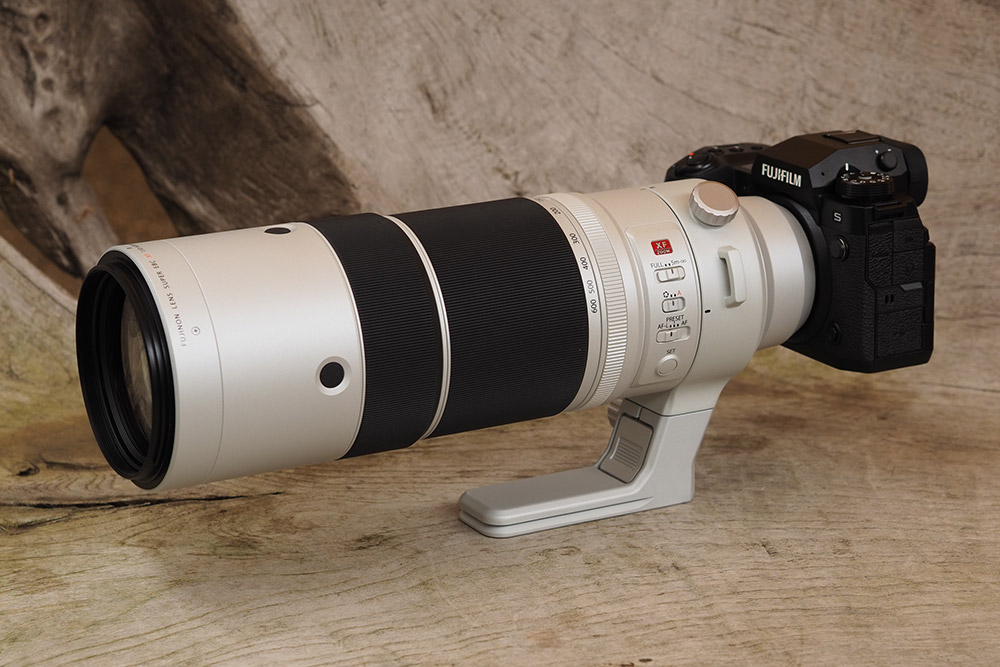
Amateur Photographer verdict
With an excellent stabilisation system, nicely balanced weather-sealed body it can focus fast enough to enable you to capture birds in flight- Excellent sharpness
- Full weather sealing
- Effective stabilisation
- Restricted to f/8 at 600mm
- Hefty
At a glance:
- 82mm filter thread
- 2.4m minimum focus
- 315mm length x 99mm diameter
- Weighs 1605g
- Fujifilm X mount
- Price: $1,999 / £1,799
One of Fujifilm’s more recent optics goes a step further than its 100-400mm sibling, in offering a staggering 900mm equivalent range at a surprisingly affordable price. Yet this comes in a reasonably lightweight design that’s entirely usable for hand-held shooting. It achieves this by using a small f/5.6-8 maximum aperture, which keeps the size manageable, but means it’s best suited to shooting in relatively good light.
The lens is compatible with Fujifilm’s 1.4x and 2x teleconverters for even longer range, although with even smaller effective apertures. As part of Fujifilm’s premium ‘red-badge’ range, the lens boasts high-end optics and built-in stabilisation. It employs a matte silver finish for shooting in hot weather and is fully weather-sealed.
In our review, we found that the Fujifilm XF 150-600mm F5.6-8 R LM OIS WR delivers excellent sharpness, with the stabilisation system kicking in well to keep things steady even at the outer edge of the focal range. At at 900mm equivalent, that is no small thing!
Read our Fujifilm XF 150-600mm F5.6-8 R LM OIS WR review
Sigma 100-400mm F5-6.3 DG DN | C

Amateur Photographer verdict
A great value telephoto lens with excellent portability and stunning contrast and sharpness- Great imaging performance
- Dual action zoom
- Effective stabilisation
- Not fully weather sealed
- Tripod mount costs extra
At a glance:
- 67mm filter thread
- 1.1m minimum focus
- 197mm length x 86mm diameter
- Weighs 1135g
- Sony E and L mount
- Price: $800 / £899
For E-mount and L-mount users looking for a portable and affordable long telephoto option, Sigma has come up trumps. Designed from the ground up for full-frame mirrorless cameras, it can also be used on APS-C models, giving a 150-600mm equivalent range. Highlights include a dual action zoom design, either by rotating the zoom ring or pushing and pulling the lens hood, and four-stop optical image stabilisation with a dedicated panning mode.
In our review, we praised this lens highly for the value for money it offers. Optical performance is highly impressive, especially for such a compact lens, and its ability to nail the shot consistently, even at the outer edge of its zoom reach, is highly commendable.
A tripod mount ring is available as an optional accessory. The main concession to its relatively low price is that the lens isn’t weather-sealed, although it does have a seal around the mount to help protect the camera.
Read our five star review of the Sigma 100-400mm F5-6.3 DG DN | C
Sigma 150-600mm F5-6.3 DG DN | S
Amateur Photographer verdict
Covers a wide focal range and offers a quick push/pull design zoom allowing for quick zoom action. Even though weighty it comes at a very affordable price for a telephoto zoom- Quick zoom action
- Tripod foot included
- Superb quality
- Not as fast to focus as rivals
At a glance:
- 95mm filter thread
- 2.8m minimum focus
- 266mm length x 109mm diameter
- Weighs 2100g
- Sony E and L mounts
- Price: $1,249 / £1,199
Sigma’s longest telephoto lens for full-frame mirrorless cameras combines the best features of its two DSLR offerings with the same focal length range. It promises the superb optical quality of the older ‘Sports’ lens, but in much more compact dimensions similar to the ‘Contemporary’ version. It also includes Sigma’s dual action zoom design, allowing quick push/pull zooming, with the zoom torque switchable between ‘tight’ and ‘smooth’. The barrel boasts dust and splash resistant construction, and the lens comes with a detachable tripod foot that features an Arca-Swiss type profile for clamping directly onto many tripod or monopod heads. The L-mount version is also compatible with 1.4x and 2x teleconverters.
Sony E 70-350mm F4.5-6.3 G OSS
Amateur Photographer verdict
Offering a 105-525mm equivalent range for APS-C users it is a very versatile lens with premium optics and weather sealing that will not break the bank- Useful focal range
- Premium image quality
- Useful physical controls
- Not the best for bokeh
At a glance:
- 77mm filter thread
- 1.1m minimum focus
- 142mm length x 77mm diameter
- Weighs 625g
- Sony E-mount (APS-C)
- Price: $998 / £769
Smaller sensors bring inherent advantages for shooting distant subjects such as wildlife, as they allow long telephoto reach to be attained using lighter, more compact optics. Designed for use on Sony’s A6000-series APS-C cameras, this lens offers a 105-525mm equivalent range in a package that’s smaller, lighter, and more affordable than the firm’s full-frame 70-300mm f/4.5-5.6 design. As part of the G-series range, it boasts premium optics and is one of only a select few E-series lenses to include weather-sealing. It also boasts an AF-stop button and physical switches for controlling focus and stabilisation modes, making it an ideal companion to Sony’s top-end A6500 and A6600 APS-C bodies.
Sony FE 100-400mm F4.5-5.6 GM OSS
Amateur Photographer verdict
With fast, accurate autofocus it’s entirely capable of keeping up with fast moving subjects. The superb optics come in a compact, lightweight construction that delivers breathtakingly sharp images- Exceptional quality throughout zoom range
- Pairs well with APS-C bodies
- Full teleconverter compatibility
- Very pricey
- And third-party rivals are cheaper
At a glance:
- 77mm filter thread
- 98cm minimum focus
- 205mm length x 94mm diameter
- Weighs 1395g
- Sony E mount
- Price: $2,498 / £2,149
Perfectly matched to Sony’s high-speed full-frame mirrorless cameras, this stunning lens combines fantastic image quality with super-fast, near silent autofocus and extremely effective image stabilisation. While it’s full-frame compatible, it can also be used on APS-C bodies such as the Alpha 6600, giving a 600mm equivalent reach.
For those who need to go longer, it’s also compatible with Sony’s 1.4x and 2.0x teleconverters, while retaining autofocus. Of course, there’s no getting away from the fact that this lens is seriously pricey compared to third-party offerings from Sigma and Tamron. But in return, it’s a reliable workhorse that’s guaranteed to keep up with the Alpha 1’s 30 frames per second shooting.
We gave the Sony FE 100-400mm f/4.5-5.6 GM OSS a thorough test, putting it through its paces shooting super-fast jets at the at the Royal International Air Tattoo. Quite the baptism of fire for any lens, but the G Master lens passed with aplomb. The speed and accuracy of this lens really is quite impressive – ideal for wildlife – and sharpness is consistent the whole way throughout the aperture range. It just nails the shot, again and again. As we said at the time, pair with a fast-focusing Sony body, and the whole thing starts to feel a bit like cheating.
Read our Sony FE 100-400mm f/4.5-5.6 GM OSS review.
Sony FE 200-600mm F5.6-6.3 G OSS

Amateur Photographer verdict
It is a bit of a beast to carry around but it makes up by delivering strong and consistent optical performance combined with fast and quiet focusing and a first-class build quality- Fast, reliable autofocus
- Internal zoom mechanism
- Well-balanced
- Undeniably heavy
At a glance:
- Filter thread 95mm
- 2.4mm minimum focus
- 318mm length x 111.5 mm diameter
- Weighs 2115g
- Sony E mount
- Price: $1,998 / £1,559
For Sony wildlife shooters in need of a versatile long telephoto zoom, this is a particularly strong contender. Unlike older 600mm zooms designed for DSLRs, it employs an internal zoom design for dramatically improved operability. This makes it much quicker and easier to zoom between the extremes of the range, with the balance also remaining unchanged for more comfortable hand-held shooting. Autofocus is fast and accurate thanks to Sony’s Direct Drive SSM system, and the image quality is excellent, too. The lens is fully weather sealed and incorporates three customisable focus-hold buttons. It’s still quite large and weighty, as befits a 600mm zoom, but the price comes as a pleasant surprise.
Read our Sony FE 200-600mm F5.6-6.3 G OSS review.
Tamron 150-500mm F/5-6.7 Di III VC VXD
Amateur Photographer verdict
Tamron’s mirrorless telephoto zoom is lighter and smaller then its DSLR counterparts. Furthermore it’s compatible with Sony’s Eye AF feature and in-camera optical aberration correction- Works with Eye AF
- Tripod ring included
- Optical stabilisation
- Heavier than it looks
At a glance:
- 82mm filter thread
- 60cm minimum focus
- 210mm length x 93mm diameter
- Weighs 1728g
- Sony E mount
- Price: $1,199 / £1,049
Tamron is no stranger to long telephotos, having produced the first 150-600mm zoom for full-frame DSLRs. With mirrorless it’s taken a different direction, producing a 150-500mm optic that’s not dramatically larger or heavier than typical 100-400mm designs. This means that you can pack it into a smaller bag than you’d probably expect for a 500mm lens. Built for use on full-frame cameras, it includes such desirable features as optical stabilisation for hand-held shooting and autofocus powered by a quiet, precise VXD linear motor. Tamron also says it’s fully compatible with Sony’s advanced features such as Eye AF and in-camera optical aberration correction. A removable Arca-Swiss compatible tripod mount ring comes as standard.
Text by Claire Gillo, with contributions from Andy Westlake and Jon Stapley
Now that you’ve found the best lenses for wildlife photography, have a look at these articles to learn more:
- How to check a second-hand lens for faults
- How to capture fast moving birds and animals
- Best cameras for wildlife photography
- Beginners guide to wildlife photography


